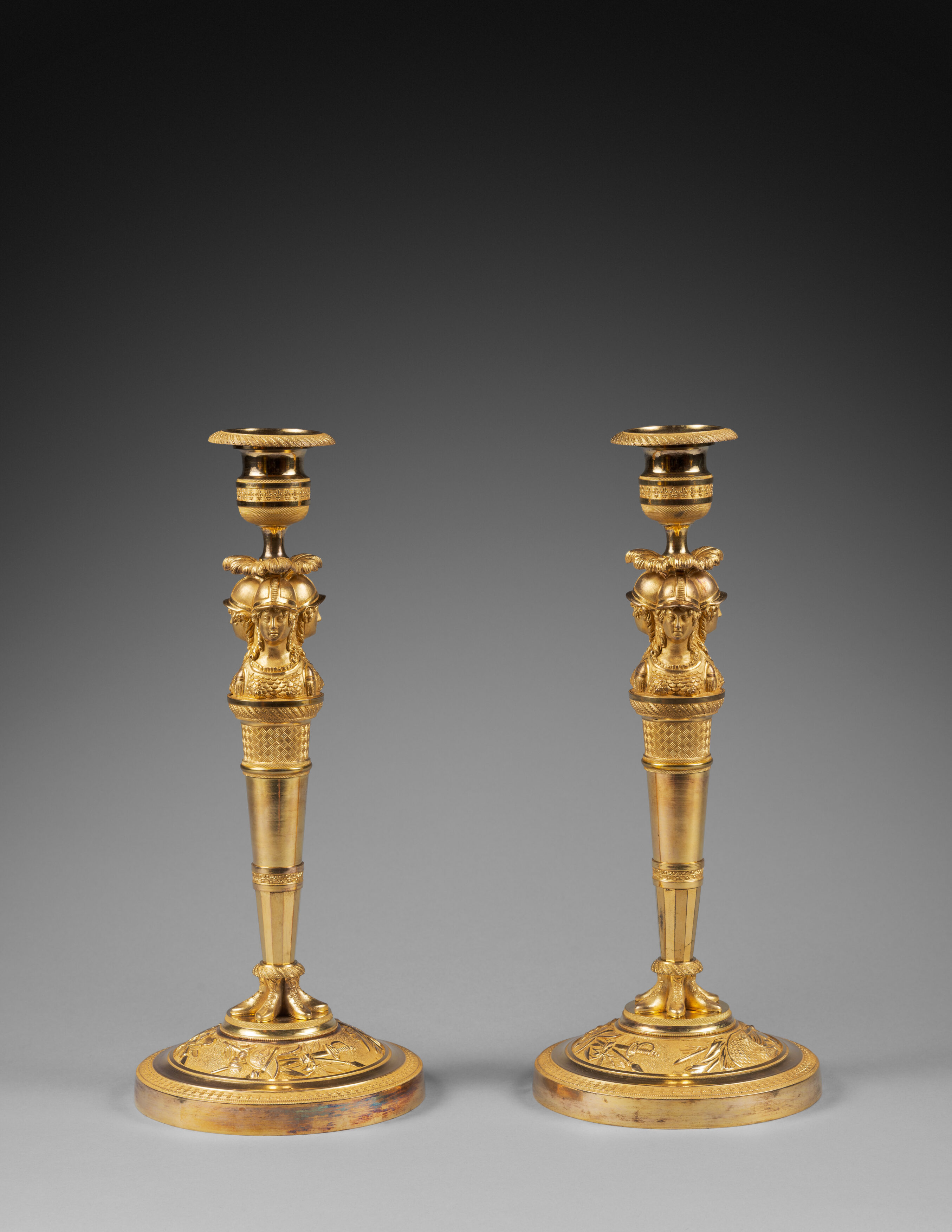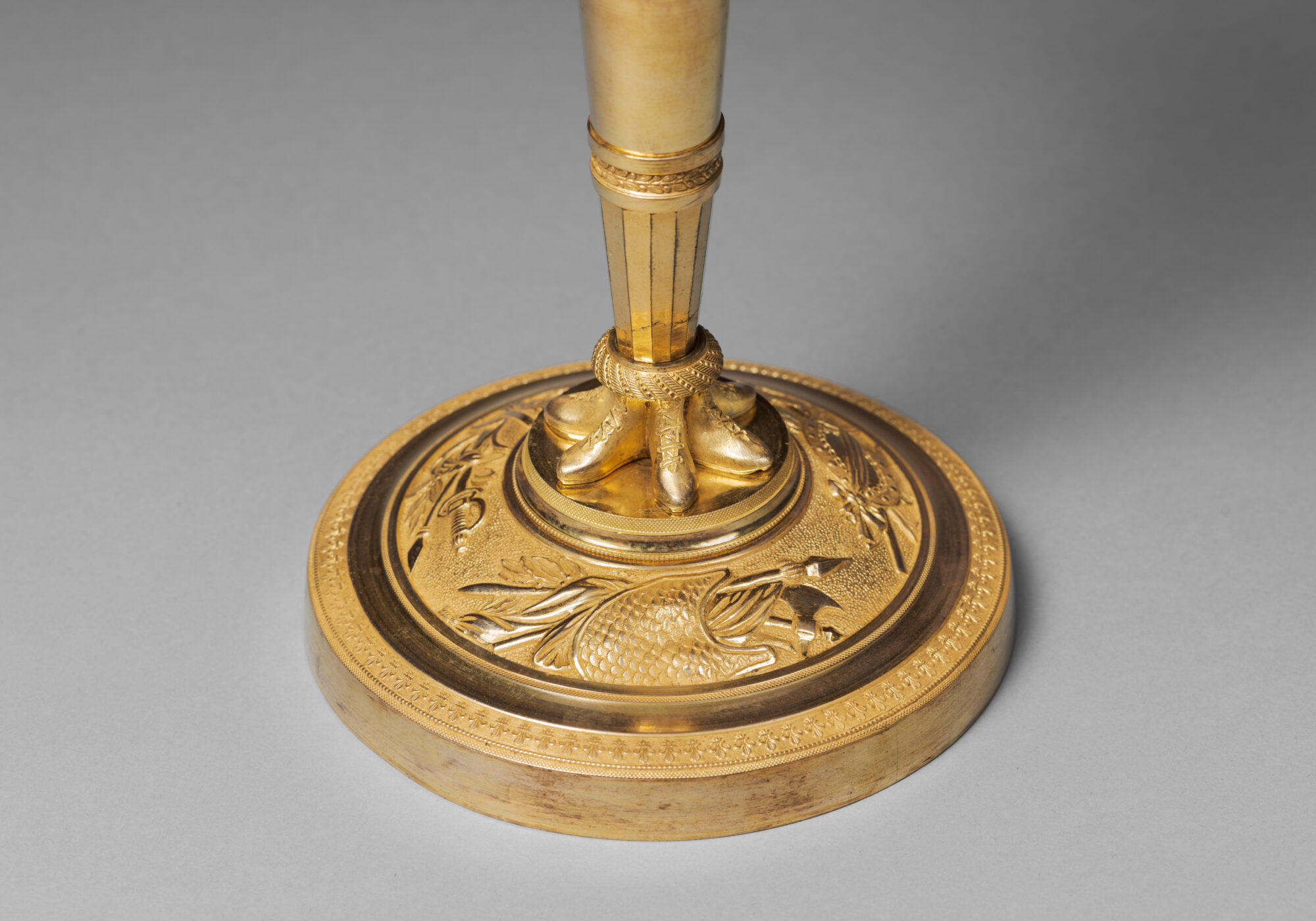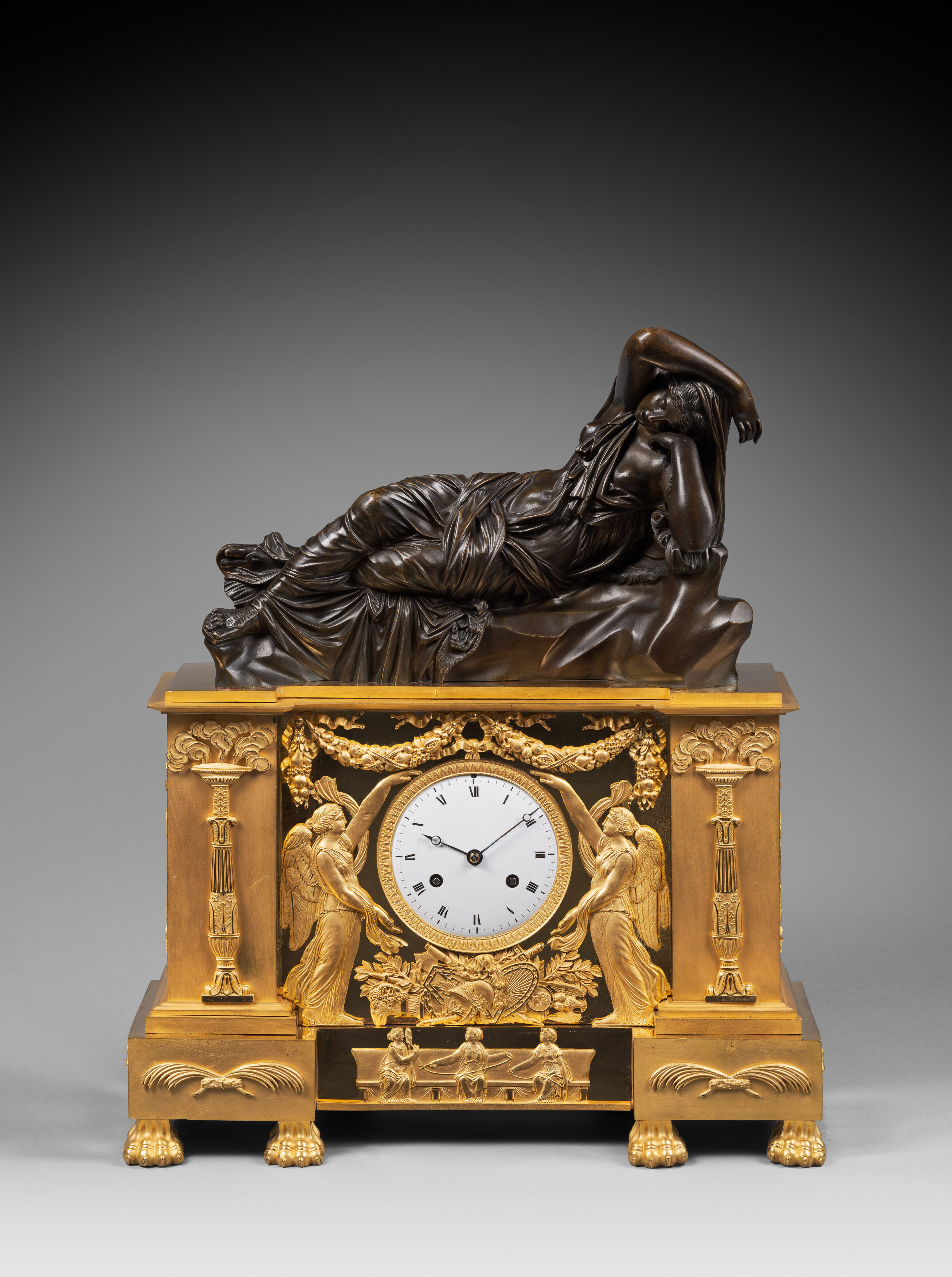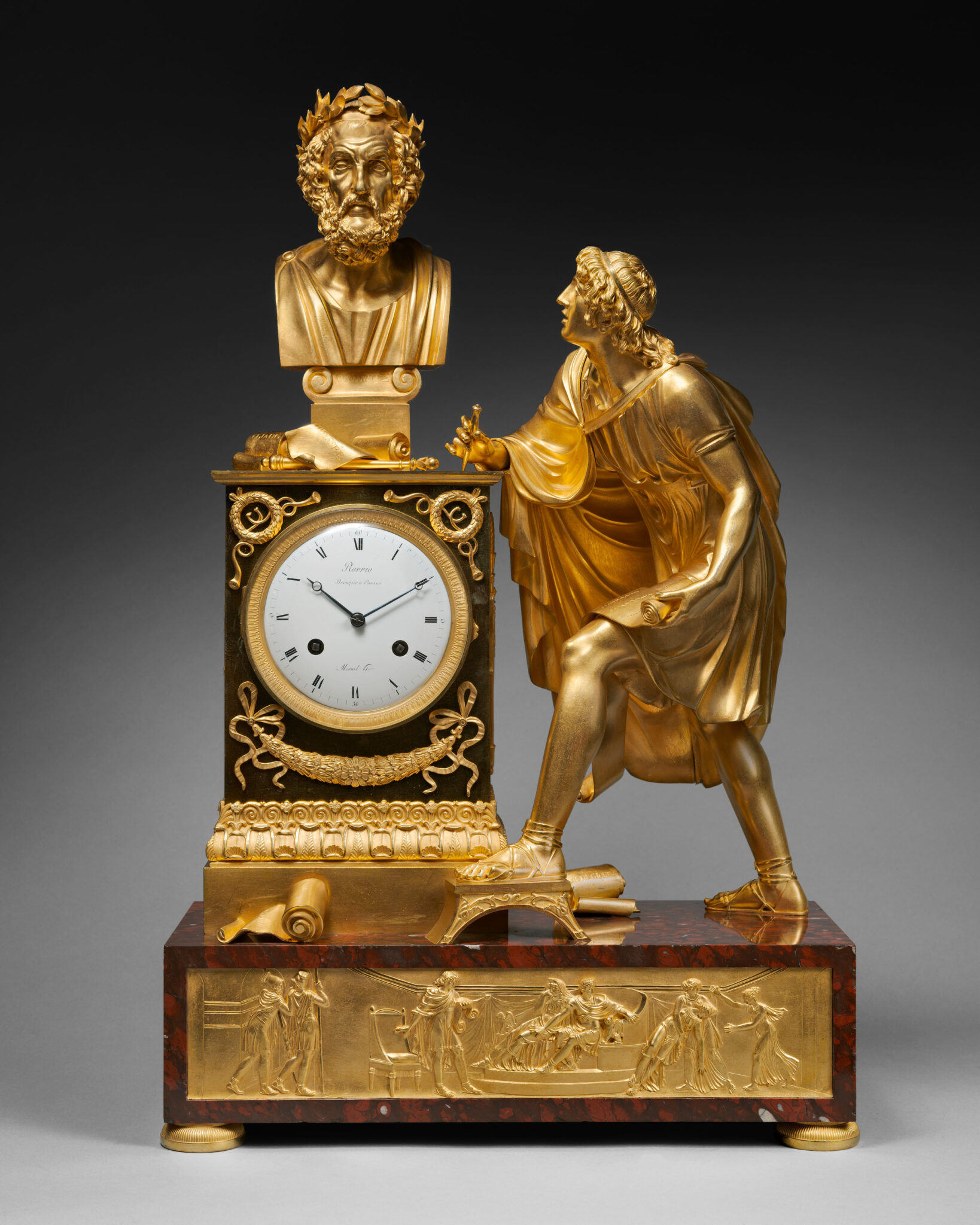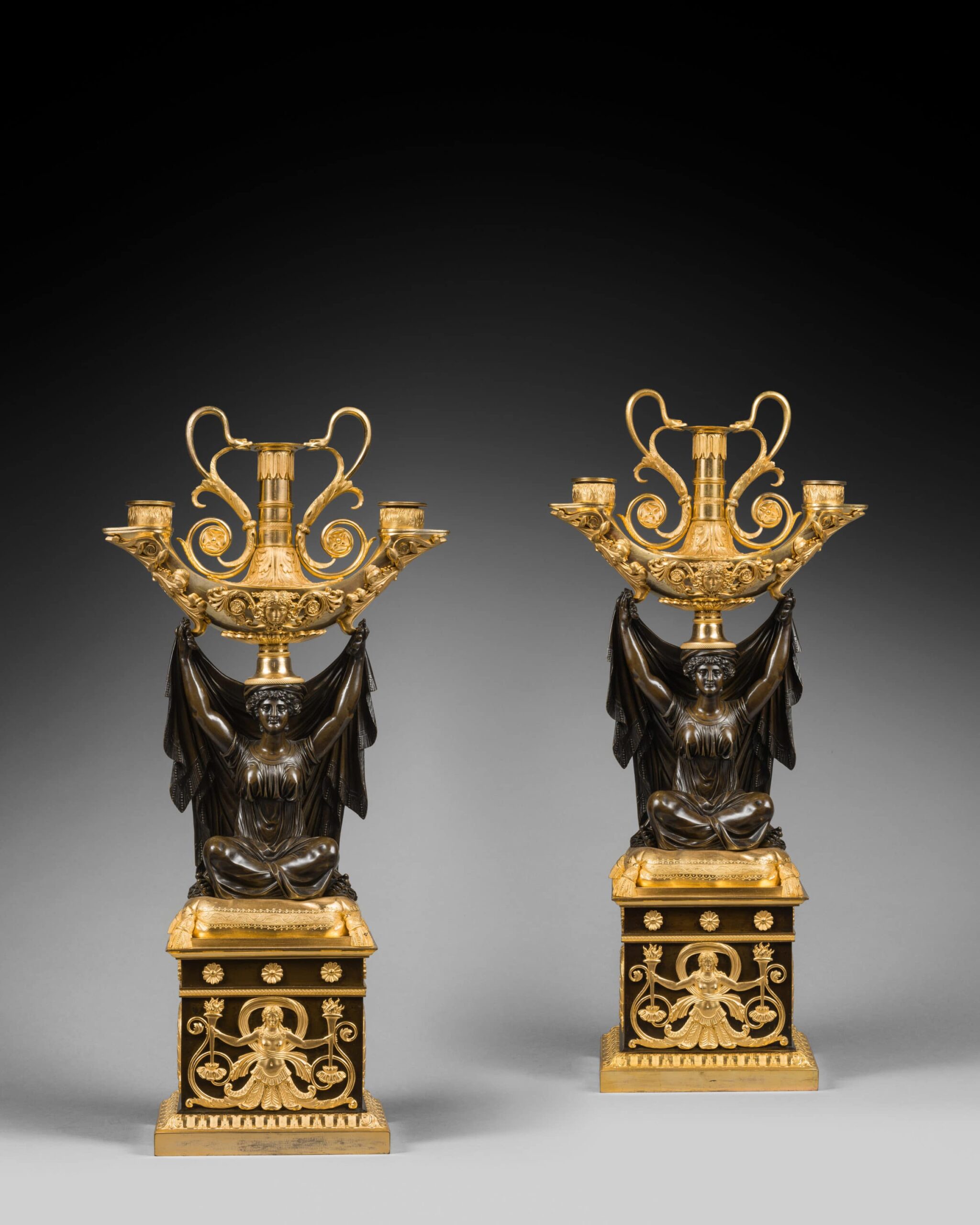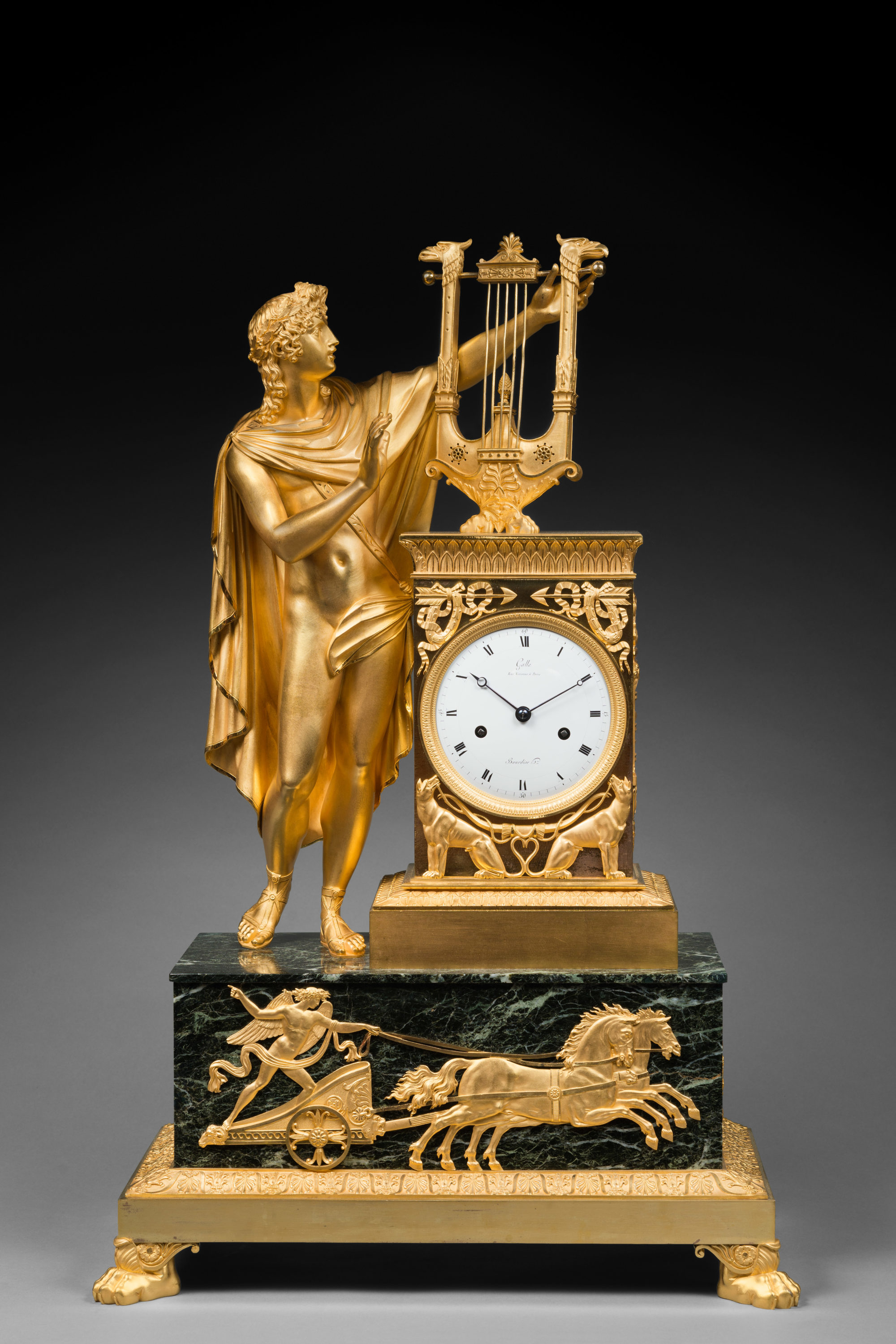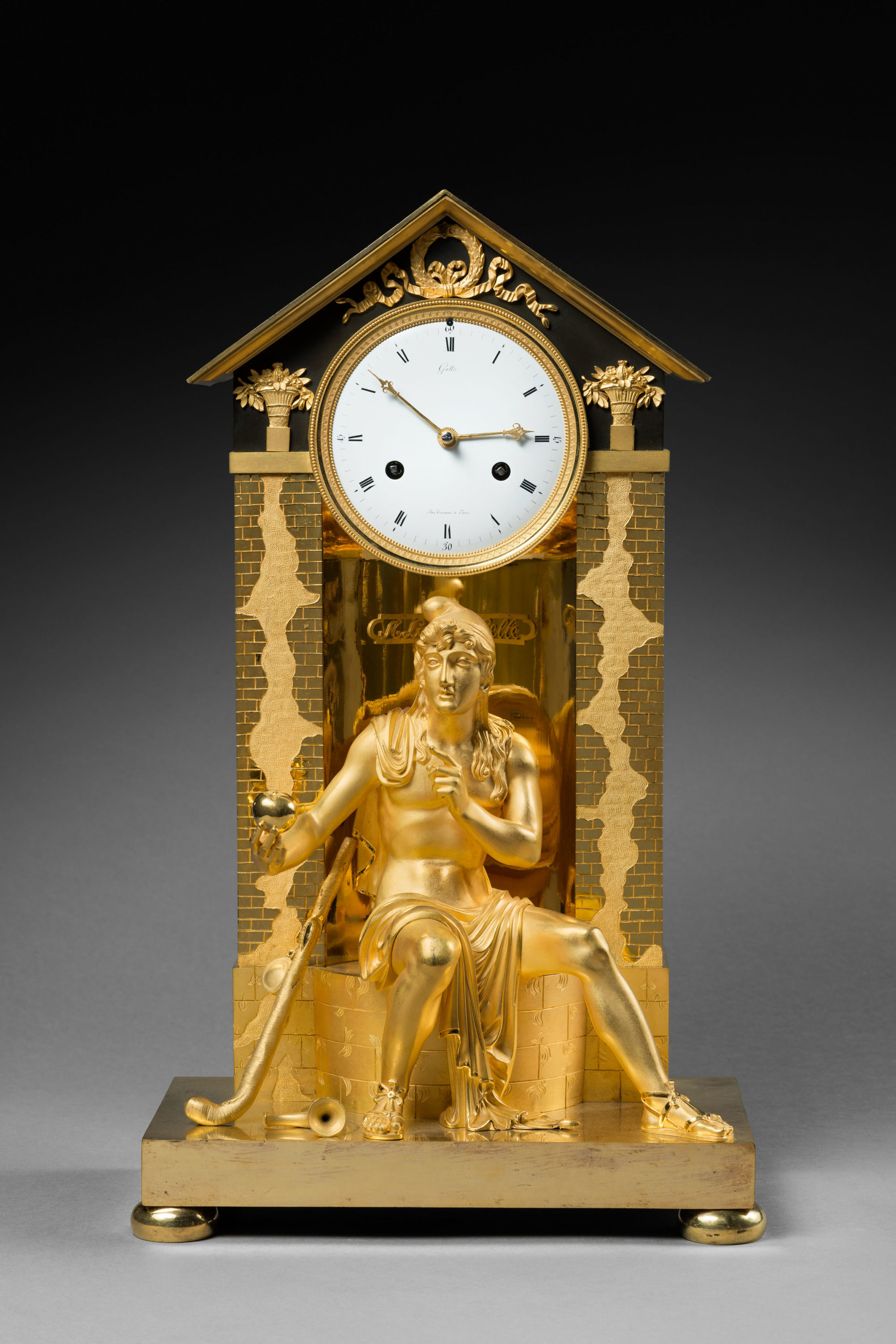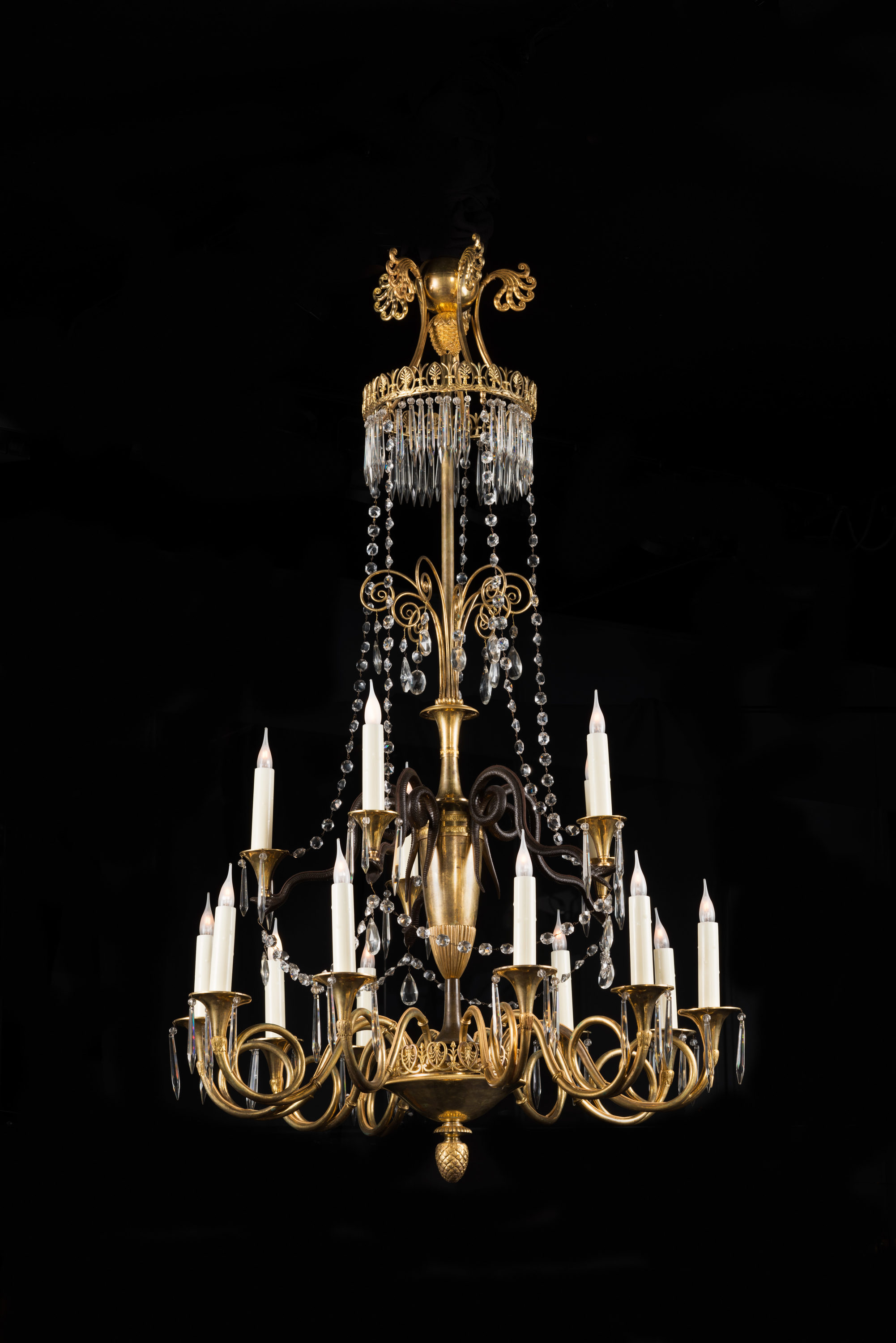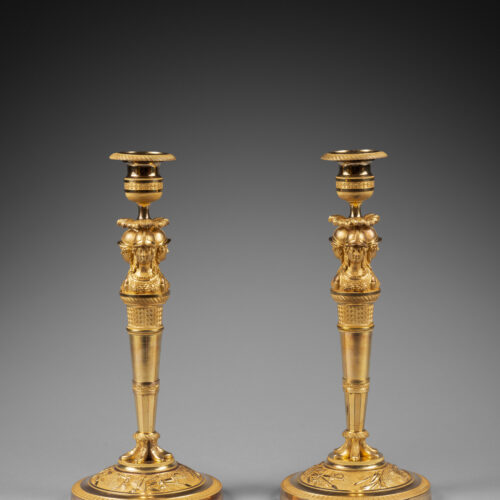Rare Pair of Candlesticks in Matte and Burnished Gilt Bronze
Busts of Athena or Minerva
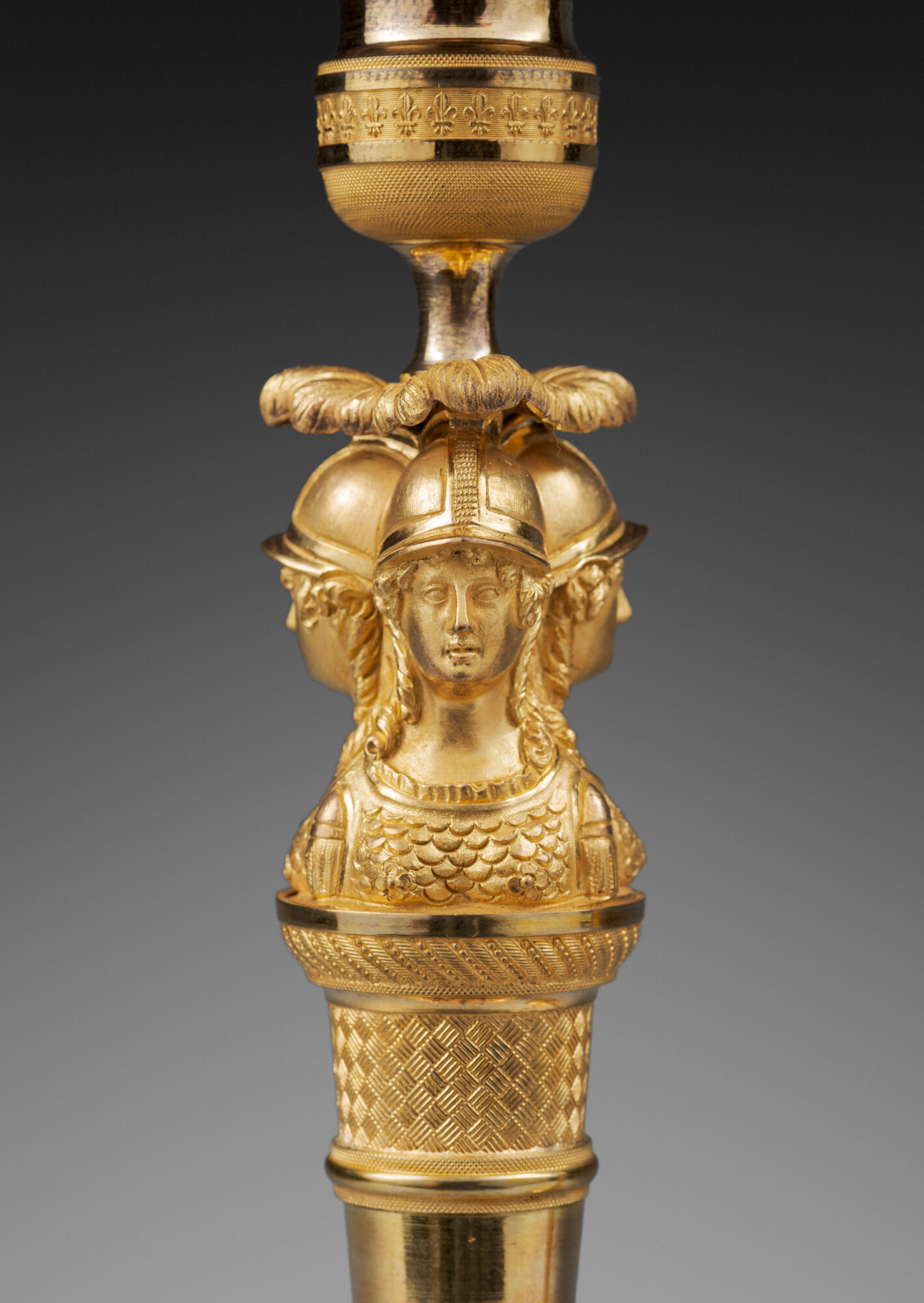
The pair of candlesticks, made of finely chased and engine-turned gilt bronze with matte and burnished finishing, feature a tapering stem with a faceted section, which is adorned with a band imitating wickerwork that terminates in three female busts. The busts represent female warriors wearing armor and feathered helmets depicting the goddess Athena (or Minerva). The lower portions of the stems feature the goddesses’ feet. The three heads support the nozzles, in the form of tapering vases that are decorated with bands of friezes of lilies, into which are fitted the nozzles adorned with engine-turned motifs. The bases are decorated with military trophies set against a matted ground, friezes of lilies, and round molded plinths.
The remarkable design of this rare pair of candlesticks, and particularly the stems adorned with three female busts, and the exceptional quality of their chasing and gilding, allow us to confidently attribute them to Claude Galle, one of the most talented bronze casters of his time. Today, only a small number of comparable candlesticks are known. Among them, one pair is illustrated in H. Ottomeyer and P. Pröschel, Vergoldete Bronzen, Die Bronzearbeiten des Spätbarock und Klassizismus, Munich, 1986, Band I, p. 326, fig. 5.1.6 . A second pair, which has been unconvincingly attributed to Pierre-Philippe Thomire, is in the François Duesberg Museum in Mons (illustrated in Musée François Duesberg, Arts décoratifs 1775-1825, Brussels, 2004, p. 31). A further pair, with faceted stems adorned with three heads of Diana, was delivered by Claude Galle in 1808; it was intended for the second salon of the Empress’s apartments in Compiègne Palace (see M-F Dupuy-Baylet, L’Heure, Le Feu, La Lumière, Les bronzes du Mobilier national 1800-1870, Editions Faton, Dijon, 2010, p. 77, catalogue n° 31).
Claude Galle (1759 - 1815)
One of the foremost bronziers and fondeur-ciseleurs of the late Louis XVI and Empire periods, Claude Galle was born at Villepreux near Versailles. He served his apprenticeship in Paris under the fondeur Pierre Foy, and in 1784 married Foy’s daughter. In 1786 he became a maitre-fondeur. After the death of his father-in-law in 1788, Galle took over his workshop, soon turning it into one the finest, and employing approximately 400 craftsmen. Galle moved to Quai de la Monnaie (later Quai de l’Unité), and then in 1805 to 60 Rue Vivienne.
The Garde-Meuble de la Couronne, under the direction of sculptor Jean Hauré from 1786-88, entrusted him with many commissions. Galle collaborated with many excellent artisans, including Pierre-Philippe Thomire, and furnished the majority of the furnishing bronzes for the Château de Fontainebleau during the Empire. He received many other Imperial commissions, among them light fittings, figural clock cases, and vases for the palaces of Saint-Cloud, the Trianons, the Tuileries, Compiègne, and Rambouillet. He supplied several Italian palaces, such as Monte Cavallo, Rome and Stupinigi near Turin.
In spite of his success, and due in part to his generous and lavish lifestyle, as well as to the failure of certain of his clients (such as the Prince Joseph Bonaparte) to pay what they owed, Galle often found himself in financial difficulty. Galle’s business was continued by his son after his death by his son, Gérard-Jean Galle (1788-1846). Today his work may be found in the world’s most important museums and collections, those mentioned above, as well as the Musée National du Château de Malmaison, the Musée Marmottan in Paris, the Museo de Reloges at Jerez de la Frontera, the Residenz in Munich, and the Victoria and Albert Museum in London.
Discover our entire collection of rare clocks on La Pendulerie Paris.
